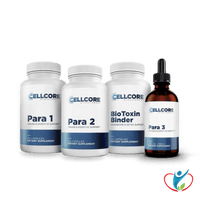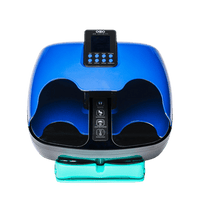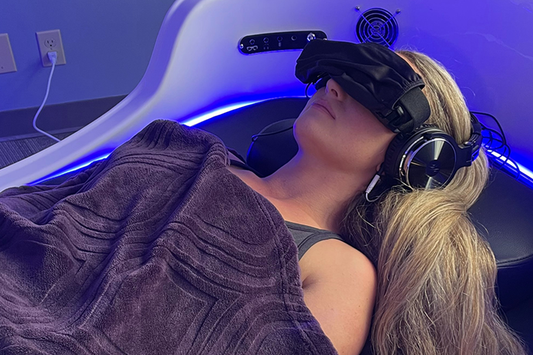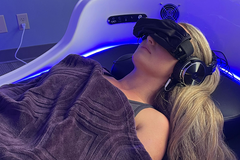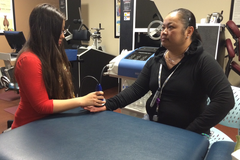Many articles and informative websites promoting the benefits of Hyperbaric Oxygen Therapy (Hbot) list “inflammation” as one potential area of improvement when this specific treatment is used. However, what exactly is inflammation? What does inflammation look like in the body? And how does something like Hbot help to treat these various inflammatory conditions? These are great questions which will help us understand the impact and benefit of Hbot for inflammation, and therefore address the root of uncomfortable, and potentially harmful, symptoms. 
What is Hyperbaric Oxygen Therapy (Hbot)?
First, here is a brief overview of hyperbaric oxygen therapy. In several other articles, we have explored the basic science of Hbot for treating various conditions, the inner workings of different types of hyperbaric chambers, treatment protocols, and even the science of Hbot for treating mental health issues. Clearly, there is growing evidence to support using Hbot for all kinds of medical and mental health diagnoses. A painless, non-invasive treatment option, Hbot allows patients to breathe 100% pure oxygen in a slightly pressurized chamber. The influx in concentrated oxygen helps the body repair and rejuvenate by supercharging the body’s natural ability to heal. Hbot is considered a successful treatment option for healing the effects of decompression sickness, radiation, and wound healing (and even covered by some insurances). Furthermore, there is mounting evidence to suggest the benefits of Hbot for mental health, athletic performance, and general health overall. Some scientists explain these positive results because of how hyperbaric oxygen therapy prevents and significantly decreases inflammation in the body. It is a logical (and scientifically proven) connection.
What is inflammation?
What do scientists and medical professionals mean when they refer to “inflammation”? What does inflammation do to our body? Simply put, inflammation is the body’s response to protect itself from something harmful, like tissue damage, viruses, or bacteria. When you are stung by a bee, for example, your body triggers an inflammatory response. White blood cells rush to the infected area to begin the work that needs to be done to heal the wound and fight the toxins. This response is also often accompanied by swelling, redness, and/or fever. This is called acute inflammation, which is typically the “good kind” of inflammation. Not all inflammation is good, however.
Chronic inflammation, on the other hand, can be very harmful to your health. This is typically caused by persistent infection or irritants, diseases of hypersensitivity (like inflammatory bowel disease or autoimmune diseases), or prolonged exposure to toxic agents. Over time, science has proved that chronic inflammation can result in dire health consequences and contributes to increased rates of cardiovascular disease, cancer, diabetes, and similar harmful conditions. Thus, it is no surprise that many researchers are committed to finding new treatment options like hyperbaric oxygen therapy treatment to help prevent, manage, and cure symptoms of chronic inflammation.
How is Hbot used for inflammation?
Circulation and blood flow are key to healthy body function. Inflammation slows these processes. When blood flow and circulation are restricted or suppressed, not enough oxygen reaches tissues and other cells in the body. Ultimately leaving the body struggling to repair itself. The possibilities of what Hbot can offer the scientific and medical community are only just beginning. We have already addressed how Hbot can help inflammation caused by athletic exertion or injury in a previous article (read more here). Many scientists agree that Hbot treatment may be an effective method in alleviating exercise-related muscle damage, injury, and inflammation. However, Hbot offers many benefits beyond the results we see in addressing athletic inflammation and injury.
Some researchers believe these anti-inflammatory effects of Hbot are due to modulation of oxidative stress or perhaps its influence on the immune system. One study conducted in the height of the COVID-19 pandemic found that Hbot served as a safe treatment for inflammation related to COVID-19. Several reports showed that by increasing blood oxygen saturation levels, patients’ conditions significantly improved with reduced lung inflammation.
Many patients suffering from the effects of inflammation-driven conditions, such as rheumatoid arthritis and fibromyalgia, experience dramatic pain relief when exposed to hyperbaric oxygen therapy. Furthermore, several clinical trials have concluded that Hbot is a safe and effective option for inflammatory conditions such as pancreatitis and ulcerative colitis. Because Hbot decreases pro-inflammatory cytokine proteins and increases anti-inflammatory ones, symptoms of these conditions diminish and improve. By targeting the root of the discomfort and pain (i.e., issues related to chronic inflammation) rather than medicating the symptom itself, patients can finally find relief.
There is even research to support Hbot as a new treatment application for surgery preconditioning to reduce complication rates and hospital stays. Through Hbot-induced oxidative stress, concentrations of pro-inflammatory groups were decreased, while the number of pro-angiogenesis cytokines continued to grow. In other words, with Hbot, new blood vessels are created from existing ones, blood circulation improves, and the body begins to heal targeted areas with few disturbances of inflammation.
Conclusion
There is mounting evidence to support Hbot as a successful treatment method for a growing number of conditions and diseases, specifically those associated with chronic inflammation. Ongoing studies and research continue to support the use of hyperbaric oxygen therapy as a means to address these inflammation-related health issues. It is exciting to see where science will lead next. As research continues to expand upon what we already know about the success of this treatment option, we are sure to see more evidence-based results to improve positive healthcare outcomes and patient wellbeing.
References
Benson, R. M., Minter, L. M., Osborne, B. A., & Granowitz, E. V. (2003). Hyperbaric oxygen inhibits stimulus-induced proinflammatory cytokine synthesis by human blood-derived monocyte-macrophages. Clinical & Experimental Immunology, 134(1), 57-62.
De Wolde, S. D., Hulskes, R. H., Weenink, R. P., Hollmann, M. W., & Van Hulst, R. A. (2021). The Effects of Hyperbaric Oxygenation on Oxidative Stress, Inflammation and Angiogenesis. Biomolecules, 11(8), 1210. https://doi.org/10.3390/biom11081210
Dulai, P. S., Buckey Jr, J. C., Raffals, L. E., Swoger, J. M., Claus, P. L., O'Toole, K., ... & Siegel, C. A. (2018). Hyperbaric oxygen therapy is well tolerated and effective for ulcerative colitis patients hospitalized for moderate-severe flares: a phase 2A pilot multi-center, randomized, double-blind, sham-controlled trial. Official journal of the American College of Gastroenterology| ACG, 113(10), 1516-1523.
Grimberg-Peters, D., Büren, C., Windolf, J., Wahlers, T., & Paunel-Görgülü, A. (2016). Hyperbaric Oxygen Reduces Production of Reactive Oxygen Species in Neutrophils from Polytraumatized Patients Yielding in the Inhibition of p38 MAP Kinase and Downstream Pathways. PloS one, 11(8), e0161343. https://doi.org/10.1371/journal.pone.0161343
Kjellberg, A., De Maio, A., & Lindholm, P. (2020). Can hyperbaric oxygen safely serve as an anti-inflammatory treatment for covid-19? Medical Hypotheses, 144, 110224. https://doi.org/10.1016/j.mehy.2020.110224
Lindenmann, J., Smolle, C., Kamolz, L. P., Smolle-Juettner, F. M., & Graier, W. F. (2021). Survey of Molecular Mechanisms of Hyperbaric Oxygen in Tissue Repair. International journal of molecular sciences, 22(21), 11754. https://doi.org/10.3390/ijms222111754
Lisagors, I. L., Sondore, A., Pupelis, G., Oshs, P., Iaunalksne, I., Pavars, M., & Arons, M. (2008). Impact of hyperbaric oxygen therapy on the clinical course of acute pancreatitis and systemic inflammation response syndrome. Anesteziologiia i Reanimatologiia, (4), 34-38.
Novak, S., Drenjancevic, I., Vukovic, R., Kellermayer, Z., Cosic, A., Tolusic Levak, M., ... & Mihalj, M. (2016). Anti-inflammatory effects of hyperbaric oxygenation during DSS-induced colitis in BALB/c mice include changes in gene expression of HIF-1α, proinflammatory cytokines, and antioxidative enzymes. Mediators of inflammation, 2016.
Sit, M. T., Schmidt, T. W., Edmonds, L. D., Kelly, J. A., Sky, K. M., Thornton, J. A., McNeary-Garvin, A. M., Thom, S. R., & Slade, J. B. (2021). The Effects of Hyperbaric Oxygen on Rheumatoid Arthritis: A Pilot Study. Journal of clinical rheumatology : practical reports on rheumatic & musculoskeletal diseases, 27(8), e462–e468. https://doi.org/10.1097/RHU.0000000000001540
Thom, S. R. (2009). Oxidative stress is fundamental to hyperbaric oxygen therapy. Journal of applied physiology, 106(3), 988-995.
Woo, J., Min, J. H., Lee, Y. H., & Roh, H. T. (2020). Effects of Hyperbaric Oxygen Therapy on Inflammation, Oxidative/Antioxidant Balance, and Muscle Damage after Acute Exercise in Normobaric, Normoxic and Hypobaric, Hypoxic Environments: A Pilot Study. International journal of environmental research and public health, 17(20), 7377. https://doi.org/10.3390/ijerph17207377
